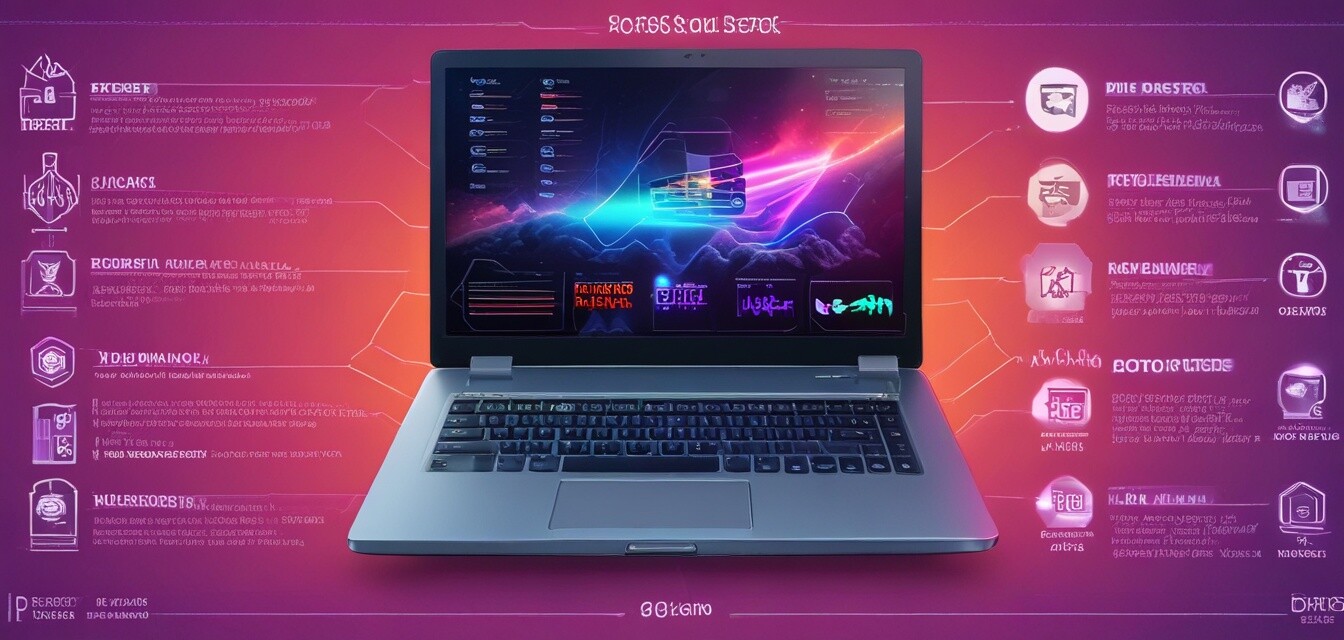
Understanding Laptop Specifications: A Beginner's Guide
Key Takeaways
- Familiarize yourself with essential laptop specifications
- Understand how CPU, RAM, and storage affect performance
- Learn to differentiate between types of storage
- Explore additional features to consider when buying
In today's digital world, choosing the right laptop can be overwhelming, especially if you're not well-versed in technical jargon. This guide aims to simplify laptop specifications, helping you understand what each component means, how they impact performance, and what to look for when making a purchase.
Essential laptop specifications explained
To help you gain clarity on what to look for, here’s a breakdown of the most important specifications:
| Specification | Description | Importance |
|---|---|---|
| CPU (Processor) | The brain of the laptop, responsible for executing instructions. | Affects overall speed and capability to multitask. |
| RAM (Memory) | Temporary storage for active tasks and applications. | More RAM allows for better performance with multiple applications. |
| Storage | Where all your data is stored; can be HDD or SSD. | Faster storage improves boot times and file access. |
| Display | Screen size and resolution determine viewing quality. | Higher resolution gives better graphics and user experience. |
| Battery Life | The duration a laptop can run on a single charge. | Longer battery life is crucial for portability. |
1. CPU (Processor)
The CPU, or Central Processing Unit, is essentially the brain of your laptop. It performs calculations and processes tasks enabling software to run efficiently. Popular CPU brands include Intel and AMD, offering various levels of performance:
- Entry-Level: Suitable for basic tasks like browsing and word processing.
- Mid-Range: Capable of handling multitasking and moderate gaming.
- High-End: Designed for gaming, video editing, and demanding applications.
2. RAM (Memory)
Random Access Memory (RAM) is akin to your laptop's short-term memory. The more RAM your laptop has, the more tasks it can handle simultaneously without lag. Typical RAM sizes in modern laptops are:
- 4GB: Basic usability and lightweight applications.
- 8GB: Good for multitasking and running moderate applications.
- 16GB or more: Ideal for gaming, large data processing, and heavy multitasking.
3. Storage Types
Laptops typically come with two types of storage solutions:
- HDD (Hard Disk Drive): Traditional mechanical drives that offer large storage capacity at lower prices but slower speeds.
- SSD (Solid State Drive): Faster and more reliable, as they have no moving parts. Greatly enhances boot times and overall performance.
When considering storage, think about how much data you'll need and whether speed or capacity is your primary concern. If you need extra storage, check out our [Desktop PCs](/products/desktop-pcs) category for additional options.
4. Display Quality
Another critical component is the display. The size and resolution of the screen will significantly impact your experience:
- Size: Common sizes range from 11 inches to 17 inches. Consider your needs for portability versus screen real estate.
- Resolution: Common resolutions include HD (1366x768), Full HD (1920x1080), and 4K (3840x2160). A higher resolution results in sharper images.
5. Battery Life
Battery life is crucial for users on the go. Most laptops range from 3 to 12 hours of battery life. Here are some tips for prolonging battery life:
- Adjust screen brightness.
- Close unnecessary applications and tabs.
- Check for power-saving modes.
Additional features to consider
Besides the main specifications, keep an eye on these additional features when shopping for a laptop:
- Keyboard Quality: A comfortable keyboard is essential for long typing sessions.
- Port Availability: Ensure the laptop has the ports you need, such as USB-C, HDMI, or SD card slots.
- Weight and Build Quality: Consider a lightweight laptop for portability and durability for long-term use.
Conclusion
Understanding laptop specifications is crucial when selecting the right device for your needs. By familiarizing yourself with terms like CPU, RAM, and storage types, you will be better prepared to make an informed decision. For further reading on choosing the right laptop, explore our [Buying Guides](/blog/buying-guides) section.
Pros
- Improves understanding of laptop capabilities.
- Helps in making informed purchasing decisions.
- Enhances the overall computing experience.
Cons
- Can be overwhelming for absolute beginners.
- Specifications change frequently as technology advances.